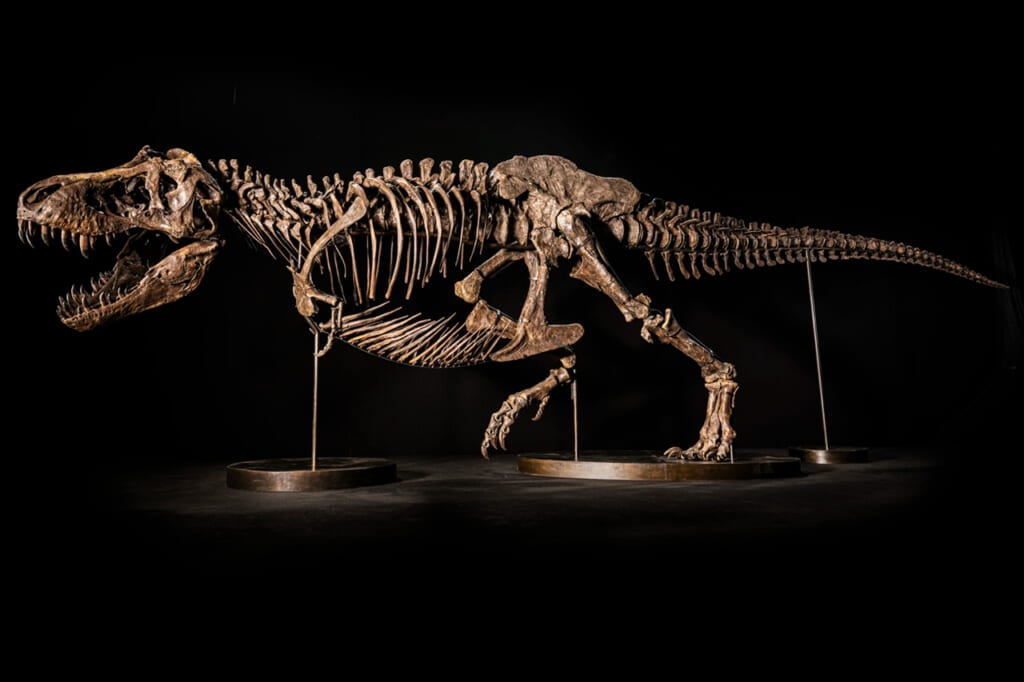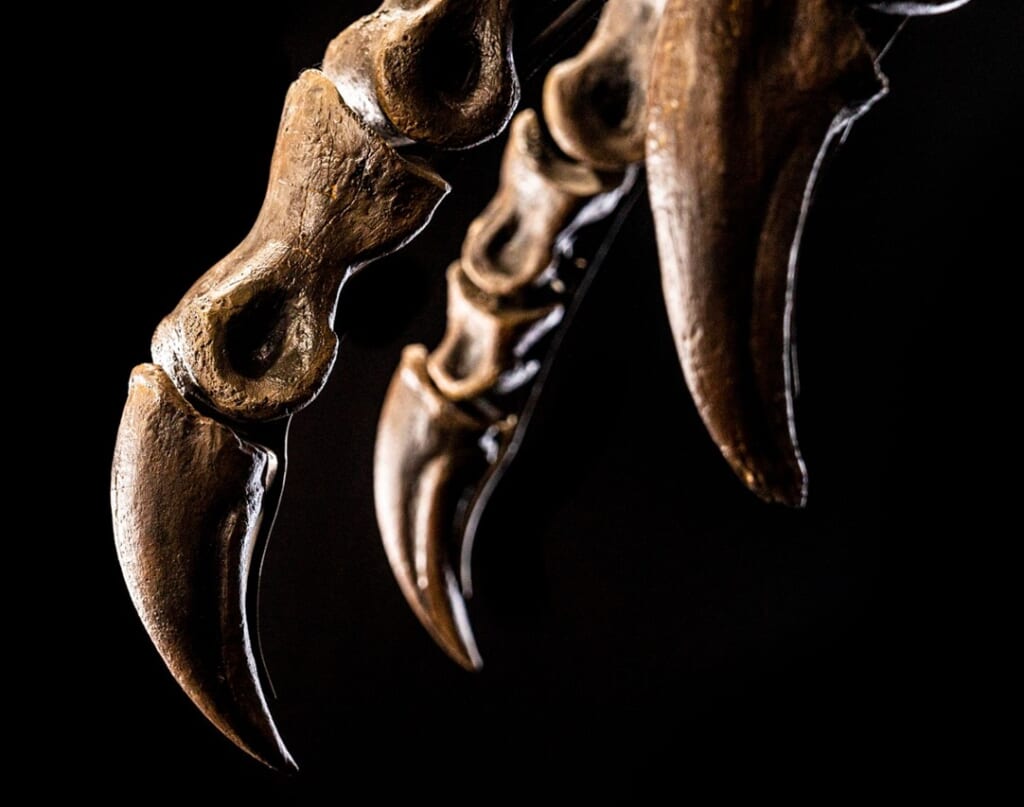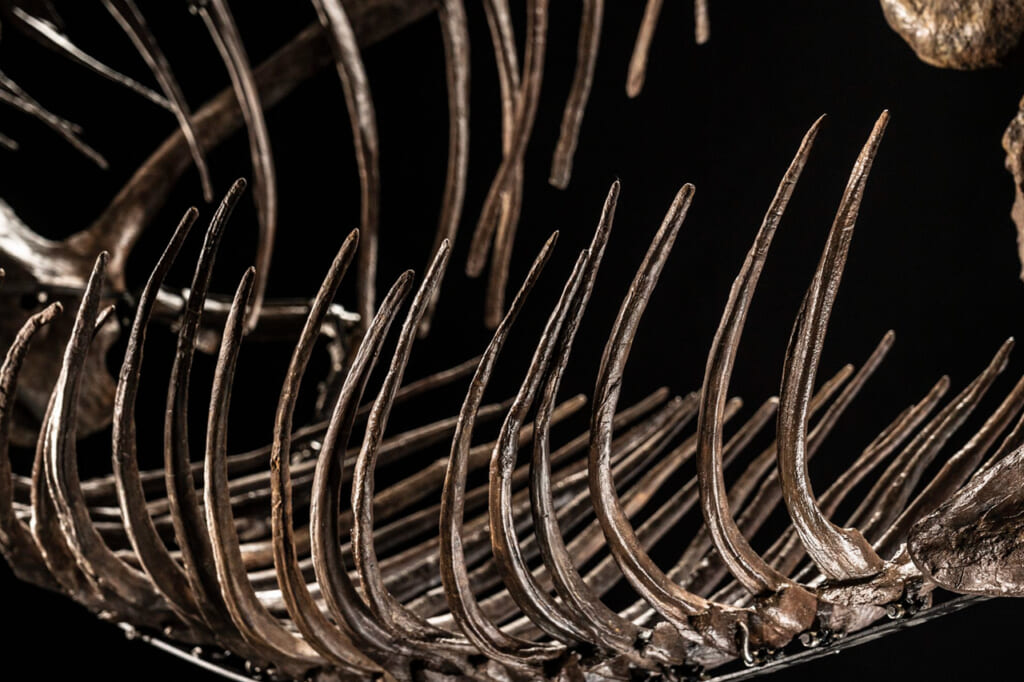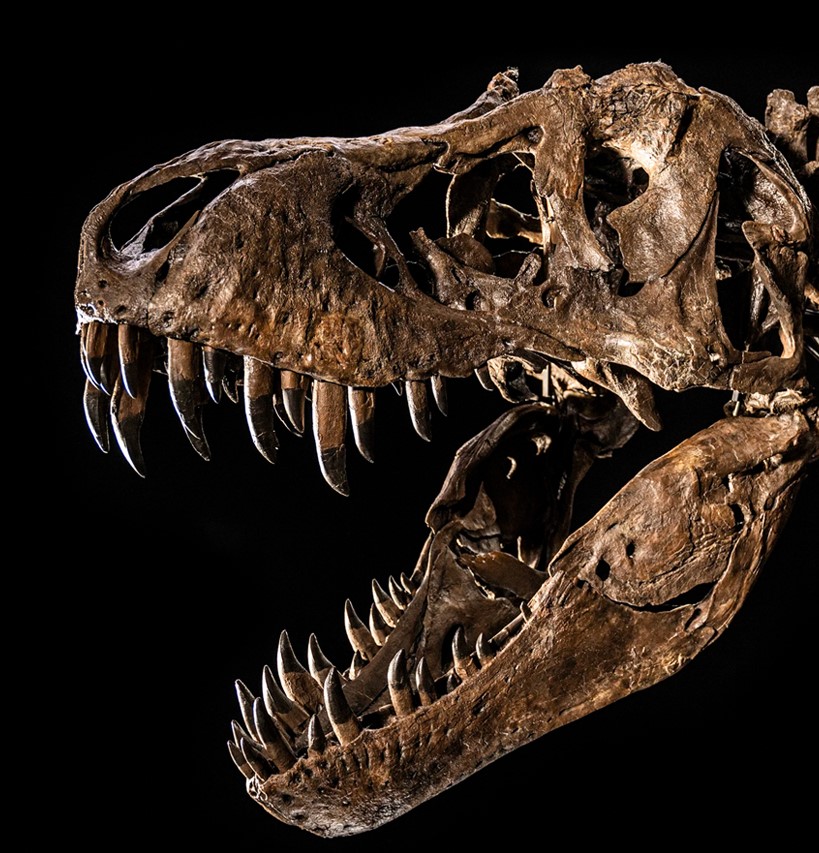This Rare T. Rex Skeleton Could Sell For $25 Million
Staged in an anatomically accurate hunting pose, the T-Rex is headed to auction at Christie’s Hong Kong in late November.

You’ve heard of Stan, the Abu Dhabi-bound T. Rex skeleton that became the most expensive fossil ever sold when Christie’s auctioned off the 39-foot-long, 188-bone dinosaur specimen for $31.8 million in 2020. Now meet Shen.
Measuring 43 feet long and 16 feet tall in its anatomically correct hunting pose, Shen—Chinese for “God-like”—will star in Christie’s Hong Kong’s 20th/21st Century Art Evening event, where it’s expected to fetch $15 to $25 million as the first Tyrannosaurus Rex skeleton sold in Asia.

The auction house includes many pieces of T. Rex trivia in its listing, like how its 8,000-pound bite force is twice that of the saltwater crocodile, or that its brain’s relatively large size suggests a more avian than reptilian level of intelligence. Another bird of prey-like feature is its inner ear’s gyroscopic stabilization capability, which indicates that it could easily track game while moving.
As many as 20,000 T. Rexes roamed the Earth in the Late Cretaceous period some 66 to 68 million years ago, but only 20 skeletons have been found to date, most of which are incomplete—Shen only has 54 percent of his bones.

“From its surging, bloodthirsty stance, to its remarkable preservation, this is one of the most scientifically studied T. rex skeletons to come to auction,” James Hyslop, Head of Science & Natural History at Christie’s Hong Kong auction house, said in a statement.
“After the unforgettable, record-breaking sale of Stan at Christie’s New York in 2020, it is a thrill and an immense privilege for us to be trusted with the sale of another wonderous T. rex skeleton.”
While T. Rex specimens’ rarity, ferocious demeanor and pop culture prevalence propagated by the Jurassic Park movies make them a hot ticket item for auction houses, scientists are concerned with these private sales.

“The problem with treating fossil specimens like trophies or collectibles is that their real significance comes from the information in the bones (from the obvious anatomical features to microscopic structures to even the isotopic composition of the molecules in the bone crystals), not from the object itself,” Thomas R. Holtz, a principal lecturer in Vertebrate Paleontology at the University of Maryland, told Newsweek.
“Fossils which are in museum collections are in principle accessible to researchers now and into the future for analysis and study, including types of analyses and studies that we can’t even imagine yet. Specimens which are privately owned are not so accessible, and even if they are now they might not be in the future.”
Shen’s value to science doesn’t just lie in his bones, but the process by which which he was found in Hell Creek Formation in McCone County, Montana. The positioning, surrounding rock formations, and content of surrounding sediment all provided crucial information to paleontologists upon discovery.

But if it becomes common practice to sell skeletons privately as a commodities, collectors may not bother to diligently document this info.
“Some commercial collectors just want to dig up fossils as trophies, so they don’t bother to gather these data (and may even lack the professional expertise to know what data to collect),” he said.
“Not so much about the science but about one aspect of the private vs. public issue: a specimen bought by a millionaire/billionaire might only ever be seen by the rich person, their family, their servants, and their friends.”
Despite Holtz and other scientist’s protests, Shen’s sale on November 30 is still a go. Before then, Shen will be on display at the Victoria Theatre & Concert Hall in Singapore from October 28-30.
